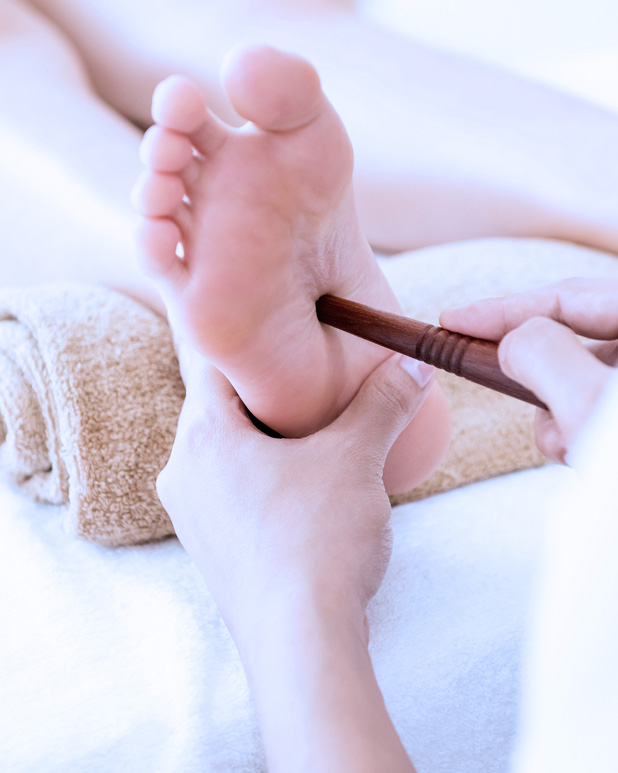Find a therapist
The Network of professional massage therapists of Quebec brings together more than 8,000 massage therapists
Member and insurer access
Find a therapist
The Network of professional massage therapists of Quebec brings together more than 8,000 massage therapists
Like traditional Chinese reflexology, Thai reflexology uses gentle pressures on specific areas of the feet to provide relief for certain common pathologies. In the case of Thai reflexology, these areas are the intermetatarsal spaces, that is, the spaces between the metatarsal bones, or all five long bones of the foot. According to the targeted area, the therapist’s pressures will activate different systems of the body (musculoskeletal, endocrine, digestive, circulatory, etc.).
Thai reflexology is usually combined with an enveloping massage of the calves, hands and feet to increase efficiency of the care and provide deep relaxation.
This massage technique improves blood and lymphatic circulation. This activation of various body organs alleviates several ailments: migraine, anxiety, digestive problems, insomnia, asthma, allergies, etc. Thai reflexology also reduces nervous and muscular tension, which helps to relieve stress and restore energy to the body.

A Thai reflexology session begins with an enveloping massage of the foot and leg to relax the muscles that are targeted by the care. Unlike the Chinese method, this step is performed using oil. Using a balm and a wooden stylus, the therapist then applies the principles of reflexology and performs pressures on precise spaces of the foot to stimulate the different systems of the body.
Deemed to be safe, this technique still has some contraindications. People with morbid state and infectious condition, diabetes or circulatory or hormonal disorders should refrain from receiving such care. Open wounds and skin disorders remain relative contraindications.
Find a therapist